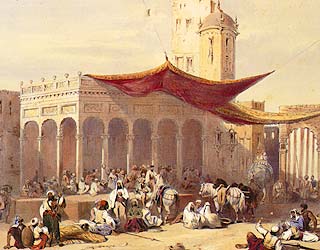 Harappa.com is a media spigot to South Asia's past.
Harappa.com is a media spigot to South Asia's past.
The objective is archaeological: literally in the case of the ancient Indus Valley Civilization, metaphorically in the excavations of early modern media from the Raj period.
Ancient Harappa, founded over 5,000 years ago, was one of the world's first cities. Today it is the first ancient Indus urban center being researched with modern scientific and multi-disciplinary tools. We are grateful to a number of the world's leading Indus scholars, particularly those working at Harappa, for sharing their work on this website. The goal is to make this little known civilization's rich heritage and new discoveries accessible to a wide audience.
The other half of the Website deals with the other end of Indian and Pakistani history, the Raj, through early media - especially photographs and film as well as lithographs, engravings, postcards and other paper ephemra. Some of this media is outside the subcontinent today. Much, like archival film, has already been lost. This site's objective is to bring these long lost images from obscurity into the daylight of the web. Harappa.com is produced out of San Francisco in the United States. The site opened with 10 pages in November 1995 and has been growing continuously by an average of nearly 20 pages a month since then. In October 1998 a linked commercial site, www.harappabazaar.com opened. In October 2004, we began accepting Google Adwords. Today, thousands or visitors a day come to Harappa.com.
Harappa.com is produced out of San Francisco in the United States. The site opened with 10 pages in November 1995 and has been growing continuously by an average of nearly 20 pages a month since then. In October 1998 a linked commercial site, www.harappabazaar.com opened. In October 2004, we began accepting Google Adwords. Today, thousands or visitors a day come to Harappa.com.
"Serai: The usual meaning in India is that of a building for the accomodation of travellers with their pack-animals; consisting of an enclosed yard with chambers around it." (Hobson-Jobson, 1903)
Illustration: Ranjit Singh's athdara inside the Lahore Fort, Plate 12 from "Recollections of India. Part 1. British
India and the Punjab" by James Duffield Harding
(1797-1863)
People and Copyright
© Harappa 1995-2006